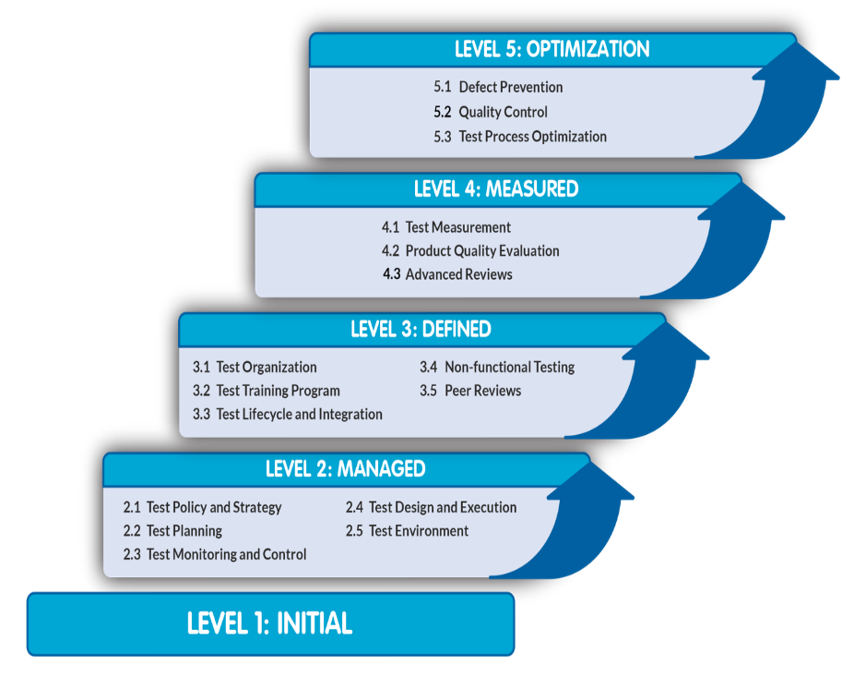
In my last series of posts I spoke about why test process improvement is important and how it helps organisations. In this series, I’d like to talk about the test process improvement framework, Test Maturity Model integration (TMMi) and how we use that to effect test process improvement.
Any test process improvement framework must provide a consistency of approach to assessment for all activities related to testing;
- Be a standard reference model applicable to all industries and development methodologies
- Identify testing strengths and best practices
- Improve testing effectiveness and efficiency
- Identify issues and risks
- Identify a programme of test process improvements
- Provide a detailed framework for test process improvement which is complementary to CMMi
And, in TMMi’s case;
- Provide public governance, measurement and accreditation
- Use maturity levels for process evaluation and improvement
TMMi uses the reference model to assess existing processes (we’ll see exactly how that is done in subsequent blogs). There are two types of TMMi assessment;
- Informal – typically used to identify improvements or to set a baseline, can be carried out by anybody with an understanding of TMMi but cannot lead to a formal maturity rating.
- Formal – typically used to provide a formal maturity rating or certification, must be carried out by two accredited TMMi assessors (one of whom must be an accredited lead assessor). More rigour in the corroboration of verbal evidence is expected.
I’ll discuss how these assessments are carried out in my next blog, and the final blog in this series will cover how you can become a TMMi assessor.
Meanwhile, if you are interested in learning more now, take a look at our TMMi page.


Bonjour à tous j’attends de vous les outils de la planification et évaluation en santé publique deuxième édition , version OMS , titre ORBC